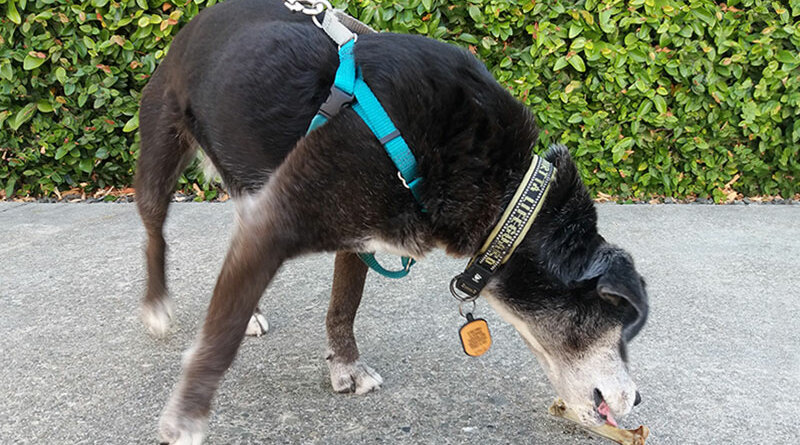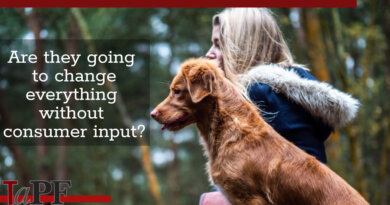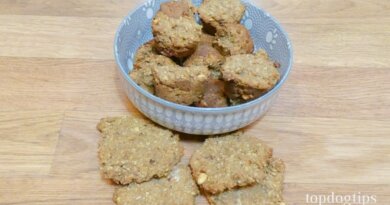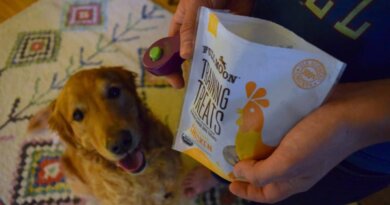How to Stop Your Dogs From Scavenging
Dogs are scavengers—there’s no pretending otherwise. Some dogs embrace their scavenger nature more than others, becoming extreme practitioners of the lifestyle. If your dog is serious about searching out food (and even things that are most definitely not food) and snarfing it down, you know how scary that can be. If the item she swallows is either toxic or causes an intestinal blockage, it can mean an expensive vet visit. But far more importantly, it’s dangerous, which is why it is essential to have some answers to the question, “How do I get my dog to stop eating everything?”
You can’t stop people from littering and you can’t control nature, so fast-food wrappers, chicken bones, toxic nuts, dead birds, rotting sticks and barely buried cat poo will always be around. What you can do is protect your dog from the dangers of gulping down the stuff she finds.
If your canine best friend is prone to scavenging, protecting her from trouble is a difficult but worthy challenge. Following are some ways to do it.
how to stop a dog from eating everything
1. Teach your dog such a good “leave it” that it works all the time. “Leave it” tells your dog that she is not allowed to take a particular item, but you must proof the cue until she’s mastered it. You’re probably saying, “Don’t you think I’ve already tried to teach my dog to do this? It just doesn’t work a lot of the time, especially when she finds something extra-special.” I do know how hard it is to successfully teach a dog she can’t have something that’s right under her nose just because you tell her so.
GET THE BARK IN YOUR INBOX!
Sign up for our newsletter and stay in the know.
That’s where “proofing the cue” comes in. Teaching a dog to do something is one part of dog training, but most of the effort is about getting her to do it regardless of what else is going on—helping her learn to succeed no matter how distracting the environment and how enticing the treasure. Working with a trainer will make it far more likely that you can successfully proof your dog’s “leave it” so you can use it when it really matters.
2. Reinforce your dog for paying attention. When you’re out on walks, in the yard, or anywhere your dog may be distracted by things to eat, make it worth your dog’s while to check in with you. When she looks at you, give her something amazing, such as a chunk of real chicken, a small piece of steak or a bone to chew. In a world filled with interesting things to smell and eat, you have to offer items good enough to compete. If she learns that you have special things that only appear when you are in the great outdoors, she’ll be more likely to pay attention. She will also be more likely to respond when you say her name or ask her to “watch” if those actions earn her high-value treats. When you can reliably ask for and get her attention, you can do it preventively when you see something that may tempt her, thereby avoiding the problem altogether.
3. Walk in areas with fewer temptations. Walks are always an opportunity for dogs to scavenge. Every place we walk our dogs may have objects that we don’t want our dogs to inhale, but some have more of them and others have particularly dangerous ones. Choose places that offer the fewest temptations in the way of trash and other dangers. Completely avoid areas that could have toxic items, for example, hickory nuts or pecans. If your walks include little-traveled roads, one option is to walk in the roadway to avoid surprises hiding in hedges or on people’s lawns.
4. Make eating an adventure and an odyssey for the mind. Dogs who inhale everything they come across often find searching for food and eating it to be the most exciting part of life. If we provide them with opportunities to indulge their drive to seek and consume, it helps take the edge off their desperate need to do so on walks. It won’t stop this behavior, but finding other outlets for it helps lessen the intensity, making it more likely that you can divert her attention with the techniques discussed above.
For example, feed your dog by scattering her kibble over a wide area. If you devote half of the kitchen to her dinner, she has to search for each piece, and that allows her to use her brain and her nose at every meal. It also keeps her from eating her dinner in just a few seconds. Or try a snuffle mat.
5. Do some nose work with your dog. Teach her to use her nose in games. Two of the easiest are “Find It,” in which you ask your dog to stay and then hide a treat (or treats) she has to find, and “Which Hand,” which allows her to choose the hand that holds a treat by nudging it gently. If she chooses correctly, she receives the treat.
6. Slow down her eating with a bowl designed for this purpose. Many slow feed bowls have protrusions that dogs must work around to access their food. This slows them down and requires them to work harder to eat, providing them with mental stimulation and making eating more slowly a habit.
7. For extreme cases where health is at risk, consider an extreme solution. Sometimes people stop walking their dogs because of the risks of their dog snarfing up something truly dangerous. While that’s better than a medical emergency, it can compromise the dog’s quality of life. There is another option, which is to physically prevent your dogs from being able to ingest these dangers. One barrier is a muzzle. Many people are reluctant to use one because they worry others will think the dog is aggressive, but I wish all that shame and embarrassment associated with muzzles would disappear from our world. Using one can improve the quality of your walks, allowing her to safely sniff and roll and play and enjoy herself. It’s important that the muzzle doesn’t interfere with her ability to pant to cool herself off, so choose a basket muzzle rather than a cloth one. A mesh OutFox Field Guard—originally made as a protection against dangerous foxtail awns—can also keep dogs from ingesting rocks, worms, trash and all the other temptations out there. It is a mesh covering for a dog’s entire head that does not interfere with panting, sniffing, playing or drinking.
Dogs who love to snarf up things are certainly in danger of hurting themselves and of inflicting damage on your budget. However, dogs who inhale the world in a second often have a zest for life, and make the most of it. So, while we may not want to follow their lead on what to consume, many of them set a great example of how to “suck out all the marrow of life,” as Thoreau so famously wrote.




